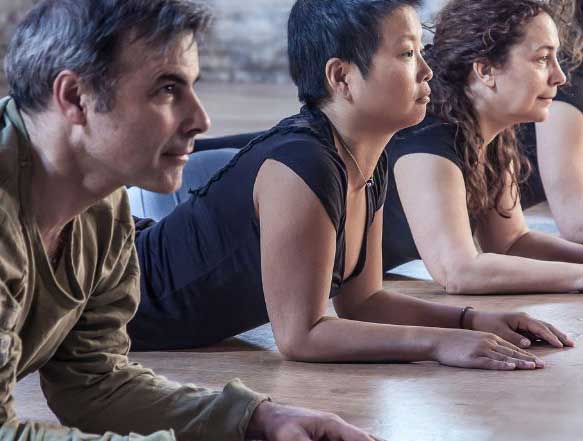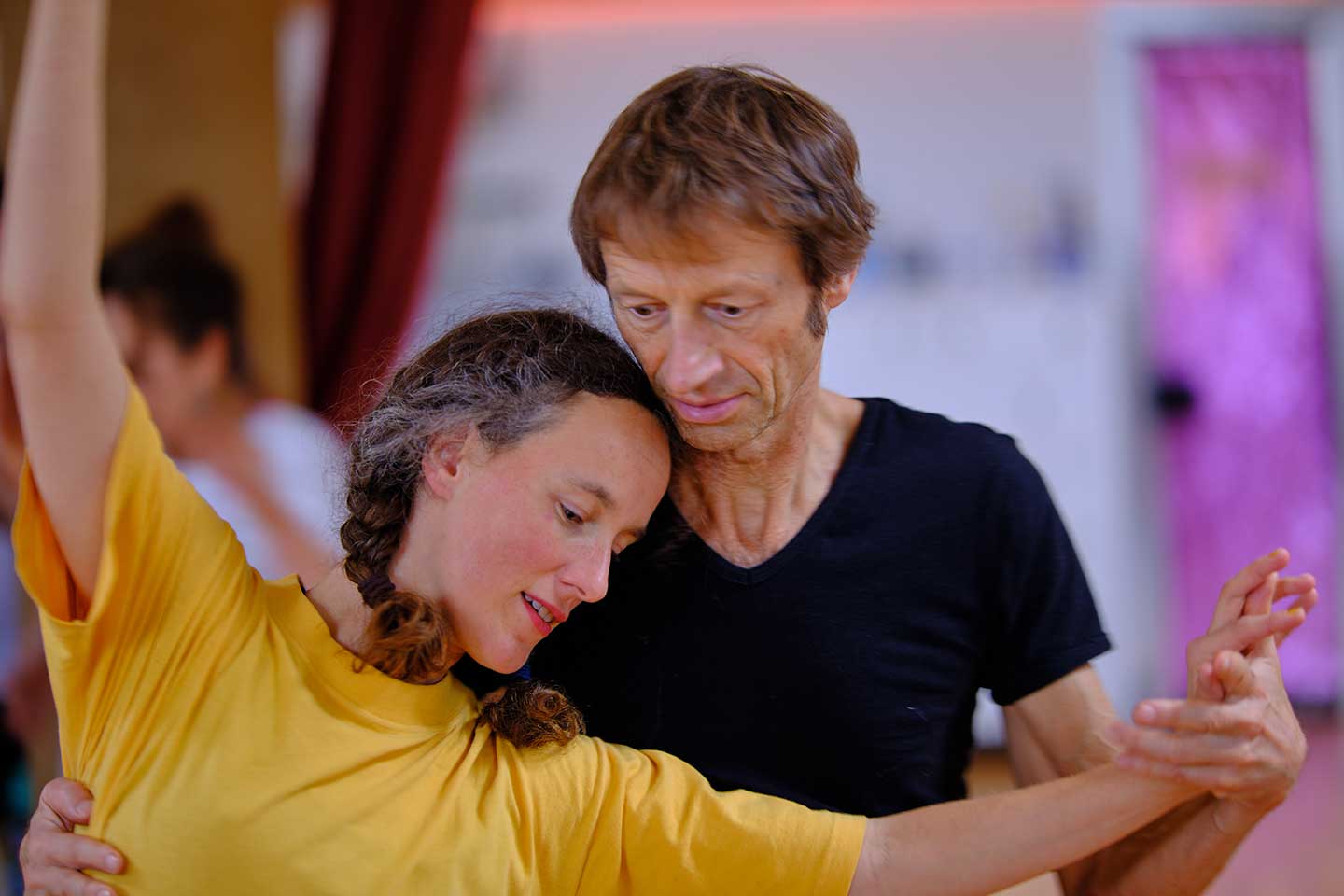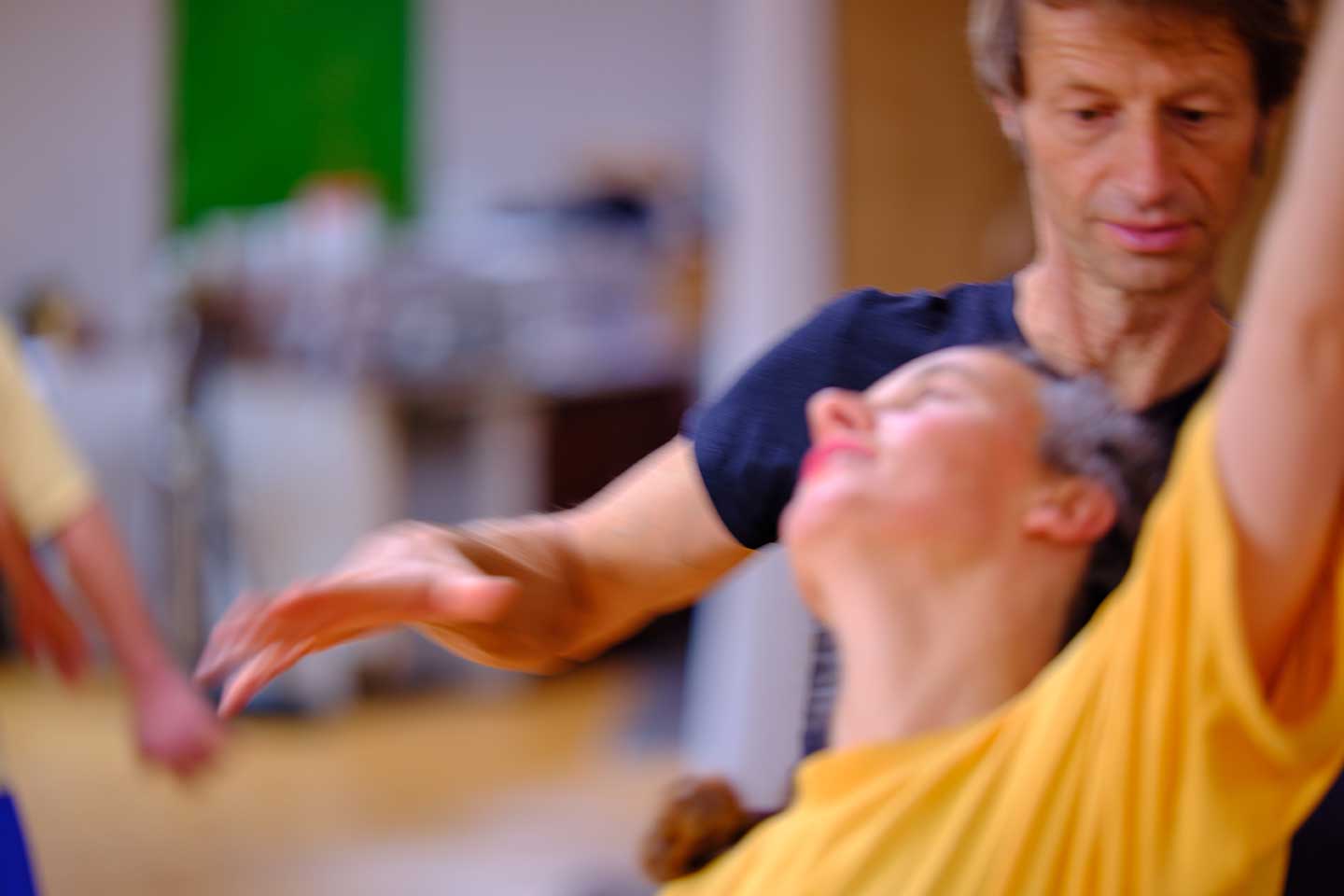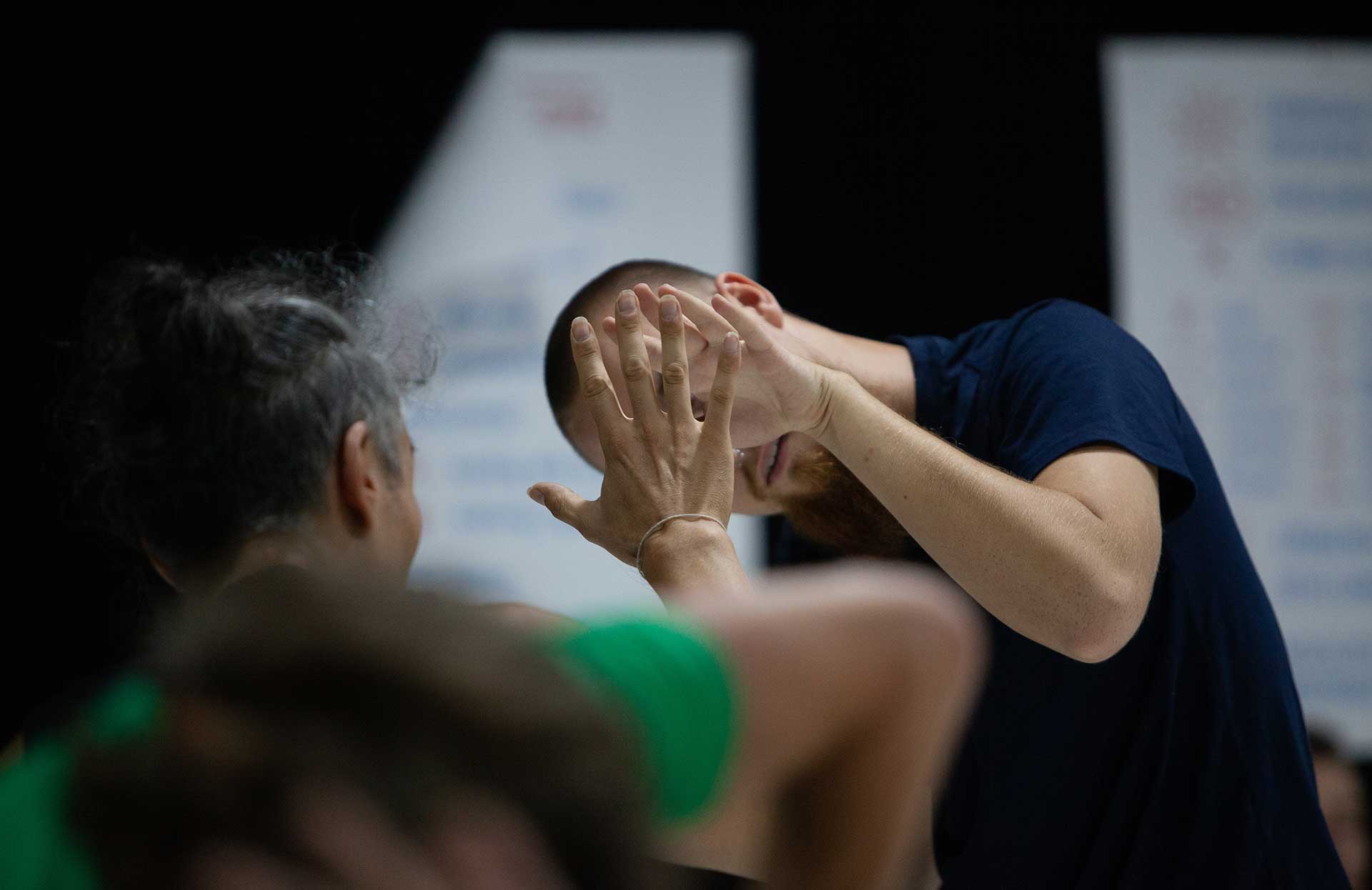Why Feldenkrais is a precious tool for Dancers
Contact Improvisation, Argentine Tango, Choreography
The application of the method is versatile!
Feldenkrais is taught in both individual sessions and group classes. Regardless of the format you choose, the learning process is diverse and explores the inherent potential within every individual.

Individual Sessions – Functional Integration
These sessions are tailored to the client’s specific needs. Through close collaboration, either hands-on or verbally guided, the teacher and client explore individual movement patterns together. They find gentle, effective ways to release blockages and rewire new functional patterns. This process fosters a deep connection to inner resources. This form of individual work is called Functional Integration.

Group Classes – independent exploration
In group classes, participants are verbally guided through movement sequences. The focus is on independent exploration and experiencing the movements — not on imitation, but on one’s own, individual learning process. How am I connected to myself? Where is too much tension, where to little? Where and how does movement become connected, light, pain-free, elegant, and, when needed, powerful? What does it mean to feel at home in my body?
The Feldenkrais Method opens the space for individual learning, profoundly supporting the process of healing and becoming healthy. After all, it’s not about returning to how you were before an event (e.g., an injury), but about discovering a new quality of being.
Contact me1) Dance is Expression from Within
We can see and feel it when dancers is deeply connected to themselves, when the dance reveals itself from within. It is not imitation, nor a show – it is an intrinsic presence radiating to the outside
The Feldenkrais Method opens the space to perceive one’s own organism from the inside, whether it’s inherent needs, boundaries, or potentials. Whether you’re a professional dancer or a dance enthusiast, it’s essential to be able to follow your passion with enthusiasm and without injury at your most inspiring level.
a) Giving Expression to Your Passion
Dancing is more than movement—it is an expression of connection, presence, and sensitivity. Dancing is directly linked to joy in life and the enhancement of coordination and performance—which is why it touches the heart, no matter how many candles are on the birthday cake.
In dance forms like Contact Improvisation, Argentine Tango, and choreography, which are based on partnership and interaction, the ability to consciously perceive oneself is the key to a deeper connection with partners and the ensemble. The Feldenkrais Method develops these skills and enriches the dance experience on a physical, emotional, and mental level.

Here’s how:
b) Self-Connection as the Foundation for Every Partnership
Feldenkrais helps dancers develop a deeper awareness of their own body, movements, and inner posture. This self-connection creates a stable foundation, allowing them to engage openly and present with their dance partner(s).
- In Contact Improvisation: Dancers learn to perceive themselves more consciously in space and in the freedom of improvisation. Surprising doors open to unforeseen levels when habitual patterns are recognized.
- In Argentine Tango: Being grounded, aligned from within, and having a conscious axis strengthen clarity in communication between leaders and followers.
- In Ensemble Work: Dancers listen more to each other, interact impulsively, and learn to perceive the group as one organism.
c) Promoting Emotional and Mental Stability
Dance partnership requires not only physical but also emotional and mental balance. The Feldenkrais Method supports dancers in becoming more aware of their emotions and mental patterns. This helps:
- Reduce nervousness and performance pressure/anxiety,
- Release tension in dealing with partners or improvised situations,
- Cultivating authentic presence in the moment,
- Stay connected with oneself, the partner, and the audience during performance, and transition between these levels seamlessly.

d) Deepening Presence and Sensitivity in Partnership
A conscious awareness of one’s own movements and body signals sharpens the ability to sense and respond to partners with sensitivity.
- In Contact Improvisation: Connected to oneself, free from desire, dancers experience genuine interaction in the moment.
- In Argentine Tango: Feldenkrais helps to send and receive subtle impulses more clearly, leading to delicate and dynamic movement
- In Ensemble Work: Dancers learn to express their individuality while remaining attuned to the collective group dynamic
e) Creativity and Freedom Through Inner Stability
When dancers feel secure and comfortable in their own bodies, they can fully unleash their creative freedom. Feldenkrais promotes this inner security by recognising habitual movement patterns and opening up to new perspectives. Dancers can refine their unique expression more freely while responding intuitively and flexibly in improvisation.
f) Sustainable Connection – For all Levels
Whether beginner or experienced dancer, Feldenkrais enables a deeper connection with oneself and one’s partner. Beginners make faster progress in technique and expression, while professionals can further refine their dance sensitivity and presence.
2. Feldenkrais: A Sustainable Foundation for Injury Prevention
The Feldenkrais Method is an indispensable tool for dancers who want to stay healthy long-term and reach their full potential. It offers precise techniques for preventing overuse, improving movement quality, and supporting rehabilitation—a holistic approach essential for both professionals and amateurs.
a. Recognizing and Improving Movement Habits
Many injuries arise from unconscious movement habits that lead to strain. Feldenkrais helps dancers become aware of these habits and gradually replace them with functional movement patterns through a mindful process.
b. Relieving Joints and Tendons
Particularly stressed areas like knees, hips, and ankles benefit from a more conscious approach to movement. Feldenkrais shows dancers how to coordinate the work of these joints with the entire body to avoid overuse.
c. Reducing Overload from Tension
Excessive muscle tension – often caused by performance pressure or incorrect technique – significantly increases the risk of injury. Feldenkrais teaches dancers to distribute effort more evenly throughout the entire system, creating a new quality in expression and contact.
d. Developing Balance and Stability
Imbalances in the body often lead to strain and injuries. Feldenkrais sharpens proprioception (body awareness) of one’s own balance and improves stability in complex dance movements.
Conclusion
The Feldenkrais Method shows how inner stability and self-awareness form the basis for mindful and fulfilling contact in dance. It not only strengthens physical movement quality but also creates emotional and mental balance, elevating dancers to a new level of expression and connection.

